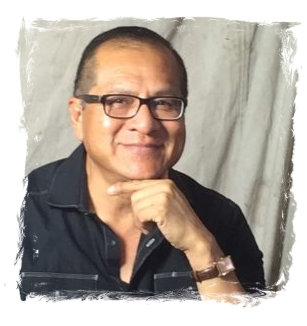Artist Media Series
Living Artists
Historic
$ 650.00
This is an early jar by Mark Tahbo. He learned to make pottery from his great-grandmother, Grace Chapella. His pieces reflect the wonderful symmetry and thin walls of an excellent potter. The designs are painted using native clay slips and bee-weed (a plant) for the black. This jar is from the 1970s. This jar has the moth pattern which was made famous by Grace Chapella. The moths are male and female (check out the painting on the heads). The triangular designs separate the moths. The jar was traditionally fired so there are both blushes and darker areas from the firing. The jar is in very good condition with no chips, cracks, restoration or repair. The piece is signed, “Mark Tahbo.
In stock
This is an early piece of pottery by Mark Tahbo. He learned to make pottery from his great-grandmother, Grace Chapella. His pieces reflect the wonderful symmetry and thin walls of an excellent potter. The designs are painted using native clay slips and bee-weed (a plant) for the black. This jar is from the 1970s. It is made from Hopi red clay. I remember Mark was always fascinated to use the red clay over the more classic buff-colored clay. However, the issues he had with it can be seen in this jar. Instead of fire-clouds, the red clay tends to get blacker marks from the fire. This jar has the moth pattern which was made famous by Grace Chapella. The moths are male and female (check out the painting on the heads). The triangular design to the right of each moth is meant to represent each of the three Hopi mesas. They are surrounded by stars. The jar was traditionally fired so there are both blushes and darker areas from the firing. The jar is in very good condition with no chips, cracks, restoration or repair. However, there are areas of fugitive black. The piece is signed, “Mark Tahbo (Chapella).
Artist Media Series
Living Artists


 Mark Tahbo was a Hopi-Tewa member of the Tobacco Clan. He had been an active potter since 1978. He learned to make pottery from his great-grandmother, Grace Chapella. His sisters Diana and Pam were also potters. Mark was influential in the early 1990s in recognizing Hopi pottery's traditional firing and keeping it as a practice among Hopi-Tewa.
Mark had won numerous awards for his pottery at Santa Fe Indian Market, the Heard Indian Market, and Gallup Ceremonials. In 1991, he won the Overall Prize at Santa Fe Indian Market. In 1992 he was awarded Best of Division at the Heard Museum Indian Fair. Awards continued to be presented to him in 1993 and 1994. His pottery is featured in books such as "Talking with the Clay" and "Collecting Authentic Indian Art." He is remembered as one of the exceptional traditional innovators of Hopi pottery. His pieces reflect the remarkable symmetry and thin walls of an excellent potter. The designs are painted using native clay slips and beeweed plants for the black.
Sadly, Mark passed away in December 2017. We were lucky to work with him at King Galleries for over 20 years. His creativity and artistic genius will be missed.
Mark Tahbo was a Hopi-Tewa member of the Tobacco Clan. He had been an active potter since 1978. He learned to make pottery from his great-grandmother, Grace Chapella. His sisters Diana and Pam were also potters. Mark was influential in the early 1990s in recognizing Hopi pottery's traditional firing and keeping it as a practice among Hopi-Tewa.
Mark had won numerous awards for his pottery at Santa Fe Indian Market, the Heard Indian Market, and Gallup Ceremonials. In 1991, he won the Overall Prize at Santa Fe Indian Market. In 1992 he was awarded Best of Division at the Heard Museum Indian Fair. Awards continued to be presented to him in 1993 and 1994. His pottery is featured in books such as "Talking with the Clay" and "Collecting Authentic Indian Art." He is remembered as one of the exceptional traditional innovators of Hopi pottery. His pieces reflect the remarkable symmetry and thin walls of an excellent potter. The designs are painted using native clay slips and beeweed plants for the black.
Sadly, Mark passed away in December 2017. We were lucky to work with him at King Galleries for over 20 years. His creativity and artistic genius will be missed.